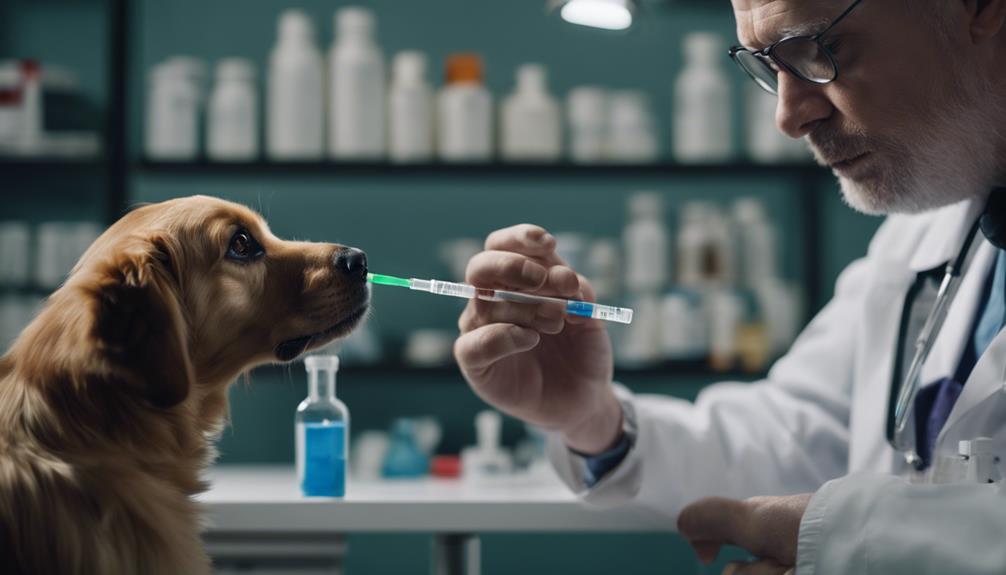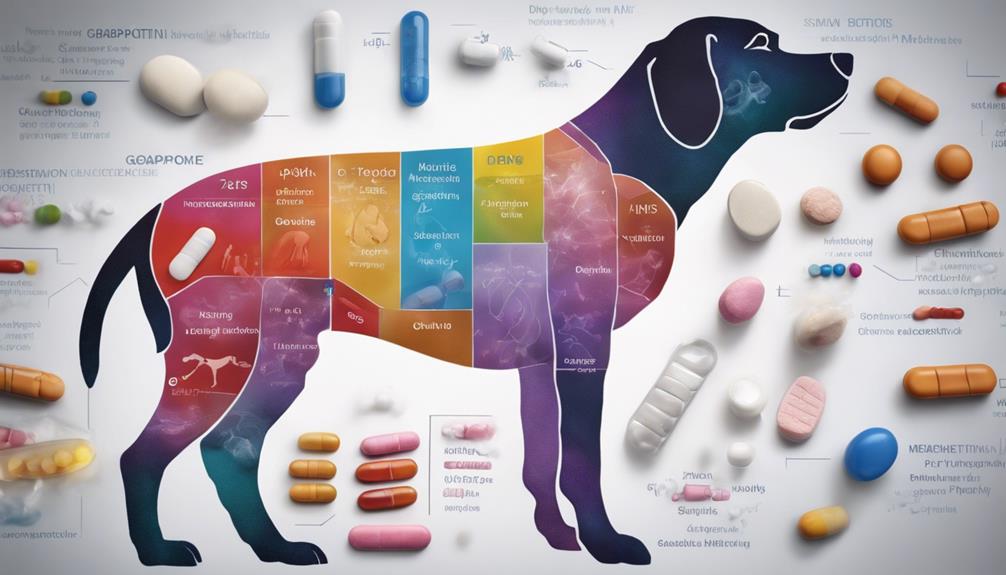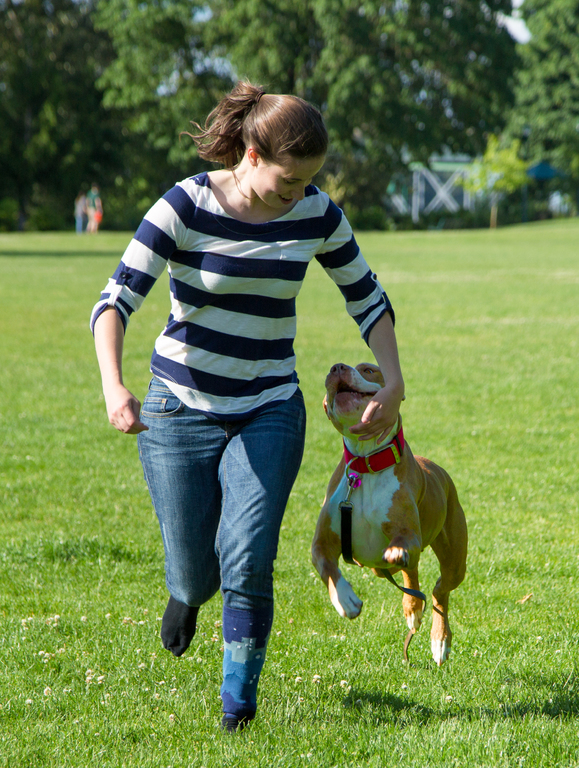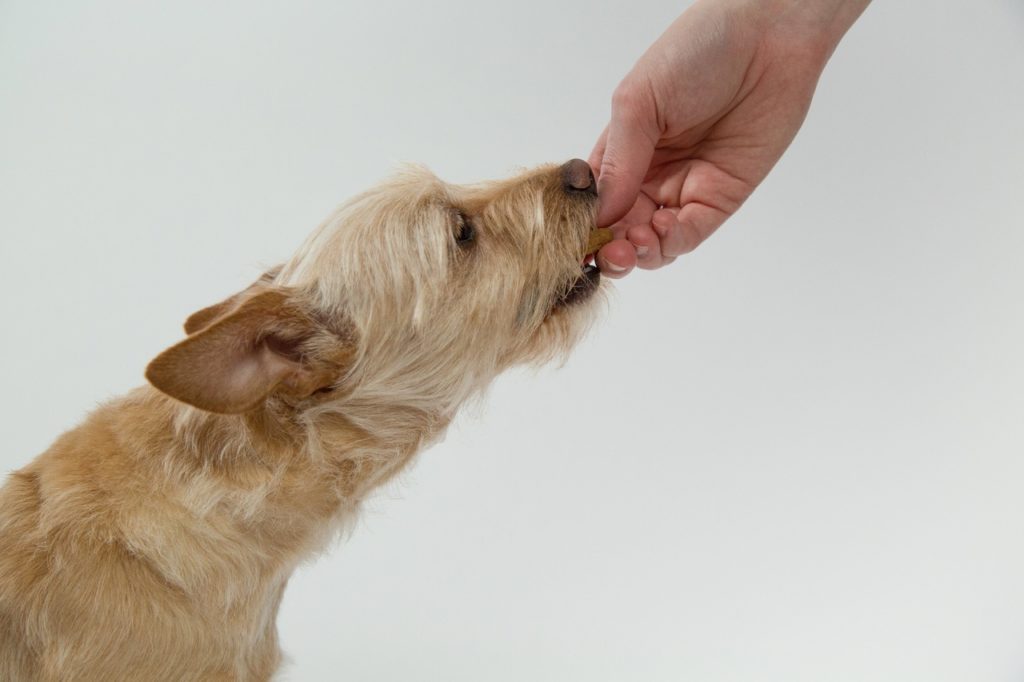Gabapentin, a medication with established efficacy in managing seizures, anxiety, and chronic pain in dogs, presents a compelling option for veterinary professionals seeking comprehensive treatment strategies for their patients. As an anticonvulsant that modulates central nervous system activity, gabapentin's versatility in addressing a spectrum of canine conditions underscores its significance in clinical practice.
However, the nuances of gabapentin use, including dosing considerations and potential interactions, warrant careful attention to optimize treatment outcomes. Exploring the multifaceted role of gabapentin in enhancing the well-being of dogs experiencing varied health challenges promises valuable insights into its therapeutic potential.
Key Takeaways
- Gabapentin in dogs effectively manages seizures, anxiety, and chronic pain.
- Dosage and administration vary, with onset of action within 1-2 hours.
- Side effects like sedation and diarrhea can occur; overdose requires veterinary attention.
- Gabapentin interacts safely with many drugs, but caution is advised with specific pain medications.
Understanding Gabapentin for Dogs
With increasing recognition in veterinary medicine, understanding the role of gabapentin in managing various conditions in dogs has become crucial for pet owners and veterinary professionals alike.
Gabapentin, an anticonvulsant medication structurally similar to GABA, is utilized in dogs for pain management, seizure control, and anxiety reduction. In the realm of pain management, it is commonly prescribed for chronic pain, particularly associated with the nervous system and conditions like osteoarthritis.
For seizure disorders, gabapentin serves as a complementary treatment for epilepsy and can sometimes be used as a standalone therapy. Additionally, veterinary behaviorists may employ gabapentin to alleviate anxiety in dogs, either as a sole intervention or in conjunction with other medications.
Understanding the diverse applications of gabapentin is essential for optimizing the well-being of canine patients.
Gabapentin's Mechanism of Action
Gabapentin exerts its pharmacological effects in dogs by modulating neural activity through its interaction with specific receptors in the central nervous system. This interaction leads to the modulation of calcium channels, resulting in the inhibition of excitatory neurotransmitter release. Here is a table illustrating Gabapentin's mechanism of action:
| Gabapentin's Mechanism of Action | Description |
|---|---|
| Modulation of Calcium Channels | Inhibits excitatory neurotransmitter release by modulating calcium channels. |
| GABA Analogue | Structurally similar to GABA, but does not directly affect GABA receptors. |
| Anticonvulsant Effects | Helps control seizures by reducing abnormal neuronal firing. |
| Neuropathic Pain Management | Alleviates neuropathic pain by interfering with pain signal transmission. |
Gabapentin for Pain Management

Utilized extensively in veterinary medicine, gabapentin serves as a valuable tool in managing chronic pain in dogs. Dogs suffering from conditions like osteoarthritis or nerve-related pain can benefit from gabapentin's ability to modulate pain signals in the central nervous system. This medication is particularly useful for chronic pain that may not respond well to traditional pain management strategies.
Gabapentin for Seizure Control
Extensively employed in veterinary medicine, gabapentin plays a pivotal role in managing seizures in dogs by effectively modulating neurological activity. When used for seizure control, gabapentin helps reduce the frequency and severity of seizures, providing much-needed relief for both dogs and their owners. Here is a breakdown of key information related to gabapentin for seizure management in dogs:
| Aspect | Details |
|---|---|
| Mechanism of Action | Blocks calcium channels, stabilizing neural activity |
| Dosage | Typically 5-10 mg/kg every 8-12 hours |
| Efficacy | Effective in reducing seizures in many dogs |
| Onset of Action | Begins working within 1-2 hours |
| Monitoring | Regular monitoring for effectiveness and side effects |
Gabapentin for Anxiety Reduction

In addition to its effectiveness in managing seizures in dogs, gabapentin also serves as a valuable tool in alleviating anxiety in canine patients. Anxiety in dogs can stem from various sources, including separation, loud noises, travel, or other stress-inducing situations.
Gabapentin works by modulating the release of neurotransmitters in the brain, such as glutamate, to produce a calming effect. Veterinarians may prescribe gabapentin for short-term situational anxiety or long-term generalized anxiety disorders.
When used for anxiety reduction, gabapentin is typically administered orally in capsule, tablet, or liquid form. The dosage varies depending on the dog's size, medical history, and severity of anxiety, and it is often given every 6-12 hours to maintain a consistent level of relief.
Proper Dosage of Gabapentin
When determining the appropriate dosage of gabapentin for dogs, veterinarians consider factors such as the specific condition being treated, the dog's weight, and any concurrent medications. It is crucial to tailor the dosage to each individual dog to ensure safety and effectiveness. Here are some key points to keep in mind:
- Start with a low dose and gradually increase as needed.
- Monitor for any signs of adverse effects such as sedation or gastrointestinal upset.
- Divide the total daily dose into 2-3 smaller doses for better tolerance.
- Consult with a veterinarian for precise dosing instructions based on your dog's unique circumstances.
- Regularly reassess the dosage to ensure it remains optimal for your dog's condition.
Administering Gabapentin to Dogs

Moving from establishing the proper dosage of gabapentin for dogs, a crucial aspect in ensuring safe and effective treatment, transitioning to the administration of this medication is a pivotal step in the comprehensive care plan for canine patients.
Gabapentin is commonly administered orally to dogs in the form of capsules, tablets, or liquid solutions. It can be given with or without food, although caution is advised when using xylitol-containing solutions. Ensuring the medication is administered correctly, following the veterinarian's instructions diligently, is essential for its efficacy and safety.
Proper administration techniques, such as offering the medication at regular intervals every 6-12 hours, play a significant role in maximizing the benefits of gabapentin therapy for dogs.
Onset and Duration of Gabapentin
Gabapentin typically exhibits an onset of action within 1-2 hours in dogs, with effects lasting approximately 6 hours, although individual responses may vary.
- Rapid relief: Within a short time frame, Gabapentin starts to alleviate symptoms.
- Sustained impact: The effects persist throughout a significant portion of the day.
- Customized outcomes: Responses can differ based on the dog's unique physiology.
- Consistent management: Regular dosing ensures continuous relief.
- Tailored treatment: Adjustments may be needed to optimize effectiveness for each dog.
Common Side Effects of Gabapentin

Side effects commonly associated with the administration of Gabapentin in dogs include mild sedation, ataxia, lethargy, sleepiness, and diarrhea, with the severity dependent on the dosage administered. While these side effects are generally mild and well-tolerated, some dogs may experience more pronounced symptoms.
It is essential for pet owners to monitor their dogs closely when starting Gabapentin or adjusting the dosage to ensure any side effects are promptly addressed. If severe or persistent side effects occur, consulting a veterinarian is recommended to assess the need for dosage adjustments or alternative treatment options.
Understanding these common side effects can help pet owners provide the best care and support for their furry companions undergoing Gabapentin treatment.
Dealing With Gabapentin Overdose
When a dog experiences an overdose of Gabapentin, prompt veterinary attention is crucial to address symptoms such as extreme sedation, diarrhea, lethargy, and ataxia. If you suspect an overdose, seek immediate veterinary care to ensure your dog's well-being. Here are five important steps to deal with a Gabapentin overdose:
- Contact your veterinarian immediately.
- Monitor your dog closely for any changes in behavior or symptoms.
- Provide as much information as possible regarding the amount of Gabapentin ingested.
- Follow your vet's instructions carefully, which may include inducing vomiting or administering activated charcoal.
- Be prepared for potential supportive care, such as intravenous fluids or monitoring for any complications.
Gabapentin's Drug Interactions

With its widespread use in veterinary medicine, gabapentin has been found to generally interact safely with many prescription drugs, although caution is advised when co-administering with hydrocodone and morphine. Gabapentin's interactions with these opioids can potentiate central nervous system depression, leading to increased sedation and respiratory depression.
It is crucial to monitor dogs closely for signs of excessive drowsiness, lethargy, or respiratory distress when using gabapentin alongside hydrocodone or morphine. Consulting with a veterinarian to adjust dosages or consider alternative medications may be necessary to mitigate the risk of adverse effects when combining gabapentin with these particular opioids.
Vigilance and careful management are key when using gabapentin in conjunction with drugs that have the potential for interactions.
Important Warnings for Gabapentin Use
Caution is advised when considering the use of gabapentin in dogs due to potential interactions with certain medications and warnings regarding its efficacy. It is essential to be aware of the following important points:
- Dosage Adjustments: Individualize dosing based on the dog's specific condition and response.
- Liver and Kidney Function: Monitor liver and kidney function regularly, especially in dogs with pre-existing conditions.
- Abrupt Discontinuation: Avoid suddenly stopping gabapentin as it may lead to withdrawal symptoms.
- Pregnancy and Lactation: Use with caution in pregnant or nursing dogs, as safety in these situations is not well-established.
- Behavioral Changes: Monitor for any behavioral changes or adverse reactions and consult a veterinarian promptly if observed.
Gabapentin for Osteoarthritis in Dogs

Gabapentin demonstrates efficacy in managing osteoarthritis discomfort in dogs through its analgesic properties targeting neuropathic pain pathways.
Osteoarthritis, a common degenerative joint disease in dogs, can lead to chronic pain and reduced mobility. Gabapentin can help alleviate the pain associated with osteoarthritis by modulating the transmission of pain signals in the central nervous system.
Integrating Gabapentin in Veterinary Care
Incorporating Gabapentin into veterinary care protocols enhances the management of various medical conditions in dogs, showcasing its versatility as a valuable treatment option.
- Optimizing Pain Relief: By combining Gabapentin with other analgesics, veterinarians can create tailored pain management plans for dogs with complex pain conditions.
- Improved Seizure Management: Gabapentin can be integrated into multi-drug seizure control regimens to enhance efficacy and reduce seizure frequency.
- Enhanced Anxiety Treatment: When used in conjunction with behavior modification techniques, Gabapentin aids in alleviating anxiety disorders in dogs.
- Balanced Sedation Protocols: Integrating Gabapentin allows for the adjustment of sedation levels in dogs undergoing medical procedures or exhibiting high anxiety levels.
- Tailored Treatment Plans: Veterinary professionals can customize Gabapentin dosages and administration schedules to suit individual canine patients' needs effectively.
Conclusion
In conclusion, gabapentin is a versatile medication that plays a crucial role in managing seizures, anxiety, and chronic pain in dogs.
By modulating signals within the central nervous system, gabapentin helps alleviate symptoms and improve the quality of life for canine patients.
It is important for veterinary professionals to be well-versed in the various applications, dosing considerations, and potential side effects of gabapentin to ensure its safe and effective use in practice.




